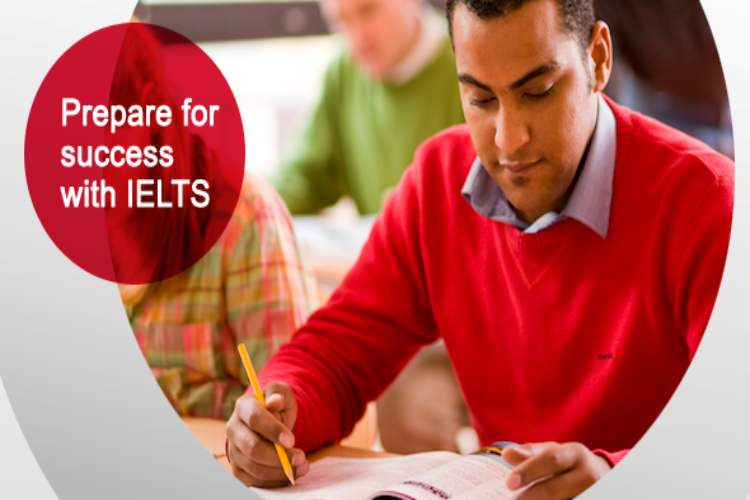A Permanent Resident Visa for Canada can be applied to the completion of studies in Canada, or to continue a professional job in the country. There are various qualifications and requirements to avail of the PR. Read along to find out about the Canada Permanent Resident Visa Requirements and what all needs to be done for it.
A study permit for Canada can be converted into a Permanent Resident Visa once the student completes his academics by following the standard procedure. One can also apply for the study permit as well as the Permanent Resident Visa at the same time, which is called dual intent. This is a common process that is acceptable to the government of Canada. Read the blog till the end to know every important fact about this process.
What is a Permanent Resident in Canada?
A permanent resident is a person who has been given the status of permanent residence through the immigration process and is not actually a citizen of the country. Foreign workers and international students do not fall under this category until they apply and are approved for it. The Government-Assisted Refugee Program also enables refugees settled in Canada to obtain permanent resident status through proper application.
The person who is identified and approved as a permanent resident is given a PR card, which he/she has to hold at all times while moving out of Canada, as it is checked upon re-arrival. In case the person does not have a PR card, it is mandatory to apply for a permanent resident travel document before arriving in the country.
Canada Permanent Resident Visa Process
The process for Canada Permanent Resident Visa can be initiated at the consulate, high commission, or embassy of Canada. In order to apply for the PR, a person should provide a medical certificate and also a verification for any criminal records. This is followed by submitting the application form for PR and paying the fee for the application. Interviews are conducted with immigration officers, which the person has to then attend.
There are a set of other requirements that may be asked for, during the application process. It is preferable to keep them handy. These include:
- Original documents as well as copies of personal identification, education qualifications, degrees, diplomas, achievement certificates, and sponsor letters to support the application
- Proof of funds for stay in Canada
- Proof of Refugee status, if applicable
- Language proficiency tests
- Other documents and tests as demanded
Also Read: What Are The Useful Tips For Cracking the IELTS For Immigration to Canada?
How Canada Permanent Resident Visa Works?
Once an individual receives the status of a Permanent Resident, he/ she can avail of most benefits in society as other Canadians do, which also includes health coverage. The status allows the person to live, work, or study anywhere in Canada. This also provides protection under the law of Canada and access to the Canadian Charter of Rights and Freedom.
The person has to respect and abide by each and every law in Canada at the municipal, provincial, and federal level, and also has to duly pay all the taxes. Unlike Canadian citizens, PR cardholders are not eligible to vote or to contest in elections or political campaigns. Also, they are barred from some jobs and professions which demand a high level of security clearance.
How to Get Permanent Residency in Canada from a Student Visa?
Students in Canada can apply for a Permanent Resident Visa during or after completing their course or educational degree, provided that they meet the requirements for application. ‘Dual Intent’ refers to the application of study visa and permanent resident visa at the same time, and is a common practice in Canada. There are numerous immigration programs with different provisions that the students can consider.
These programs include Federal Economic Class, Provincial Economic Class, Quebec Immigration, Business Immigration, including Start-Up Visa Program, and family class sponsorship. For students, the best immigration programs are explained below.
1 Canadian Experience Class
For matching the requirements of the Canadian Experience Class (CEC), a student should have at least 12 months of experience in a proper skill-based profession. This experience can be availed by applying for the Post-Graduation Work Permit. The student cannot apply after a period of 3 years if he/she has 12 months of experience. Also, internships or jobs done during the course of academics is not constituted in the work experience.
2 Quebec Experience Class
Quebec City is situated on the Saint Lawrence River in Canada and is the area where French is densely spoken. For qualifying for the Quebec Experience Class, the student should have completed a recognized study program in Quebec, and should also have intermediate proficiency in the French language. Unlike the Canadian Experience Class, the student is not required to have any working experience.
3 Provincial Nominee Programs (PNPs)
This is one of the most popular immigration programs due to the fact that applications for Canada Permanent Residence are processed more quickly than other types of immigration programs. Several provinces offer immigration programs for Canada through the provincial nominee programs and the students are required to have completed graduation from a post-secondary program. The basic requirements differ for each province, and work experience may be required too.
Also Read: Here’s How to Apply For Permanent Residence in Canada? A Detailed Guide
Permanent Resident Visa for Canada from India
There have been a huge number of people who have obtained a Permanent Resident Visa for Canada from India, and it is evident from the population proportion. As of 2020, more than 1 million had been living in Canada from India as Permanent Residents. Other than that, there are students who arrive here annually for their education courses and then there are workers from the skilled category.
In all, the relaxed Visa and job opportunities make Canada an ideal immigrating location for the Indian people. The standard PR application process remains the same along with the proper submission of documentation. For those who do not fall under the student’s category, other immigration programs can be considered, some of which are explained below.
1 Federal Economic Class
This provision facilitates the maximum number of immigrants to settle in Canada annually, with a count of above 200,000. This class comprises three programs, namely, Federal Skilled Workers, Federal Skilled Trades, and Canada Experience Class. The highest number is that of the Federal High Skilled Category. This class is operated through Express Entry, an approach followed by several provinces in Canada.
2 Canada’s Provincial Programs
For obtaining Permanent Residence from India, provincial programs can be chosen if the Federal Economic Class does not apply. Different provinces in Canada have their own immigration programs and their demands and requirements are based on the respective needs in the economy and job sector. The various provinces which have their own immigration and express entry programs are given below.
- Quebec
- Alberta
- Ontario
- British Columbia
- Manitoba
- New Brunswick
- Newfoundland
- Nova Scotia
- Saskatchewan
- Prince Edward Island
Also Read: Is The English Proficiency Exam Compulsory For People Migrating to Canada?
3 Business Immigration and Start-Up Visa
Several applications from India are also accepted for business-related immigration, which can be then converted as a Permanent Resident status. The options for business at the federal level include a self-employed program, a start-up visa program, and Immigrant Investor Venture Capital (IIVC) Pilot Program. The start-up program will facilitate permanent residence for worthy entrepreneurs.
These entrepreneurs are linked with the private sector investors, which assist in establishing the business idea. The three types of private investors are angel investors, venture capital funds, and business incubators.
4 Family Class Sponsorship
This sponsorship program can be availed of by Indians whose family members are existing permanent resident cardholders in Canada. The family members can be spouse, common-law partner, conjugal partner, dependent children, parents, grandparents, brothers and sisters (under 18 years and not married or in a legal relationship), and their accompanying relatives.
In order to be a sponsor, one must be above 18 years of age. The sponsored family member and the sponsor also have to sign an agreement for financial assistance at the time of need. However, the family member or relative also undertakes self-sustaining in the same agreement.
How to Get a Permanent Resident Visa withdrawal in Canada?
A person can voluntarily renounce the status of permanent residence if he/ she does not wish to live there anymore. If someone stays outside of Canada for a long period of time and wants to visit again, giving up on the permanent residence visa will make sure that there is no delay at the entry port. The alternative can be to present a travel document for the same.
The PR status does not lose its validity with the expired PR card. It can be continued if the person wishes to do so. However, the status may be lost if an adjudicator finds out so after an inquiry or PRTD Appeal if a removal order is issued, or the person becomes a citizen of Canada. The PR status is maintained till an official decision is announced, even if the obligations of residence are not met.
Conclusion
Canada is one of the best and the most preferable countries for Indians when it comes to attaining a permanent residence. So how are you planning for Canada immigration? How are you going to prepare to see yourself studying in Canada? Do let us know your thoughts in the comment section below.
Also Read: How Can I Get A Score Over 7.5 in IELTS? Is it A Good Score For Canadian Immigration?











Wow amazing post.